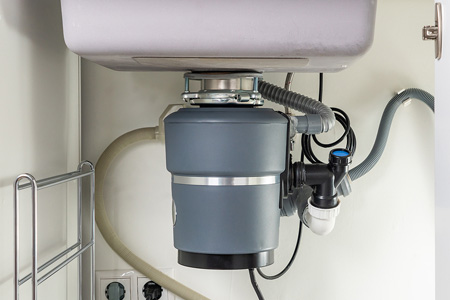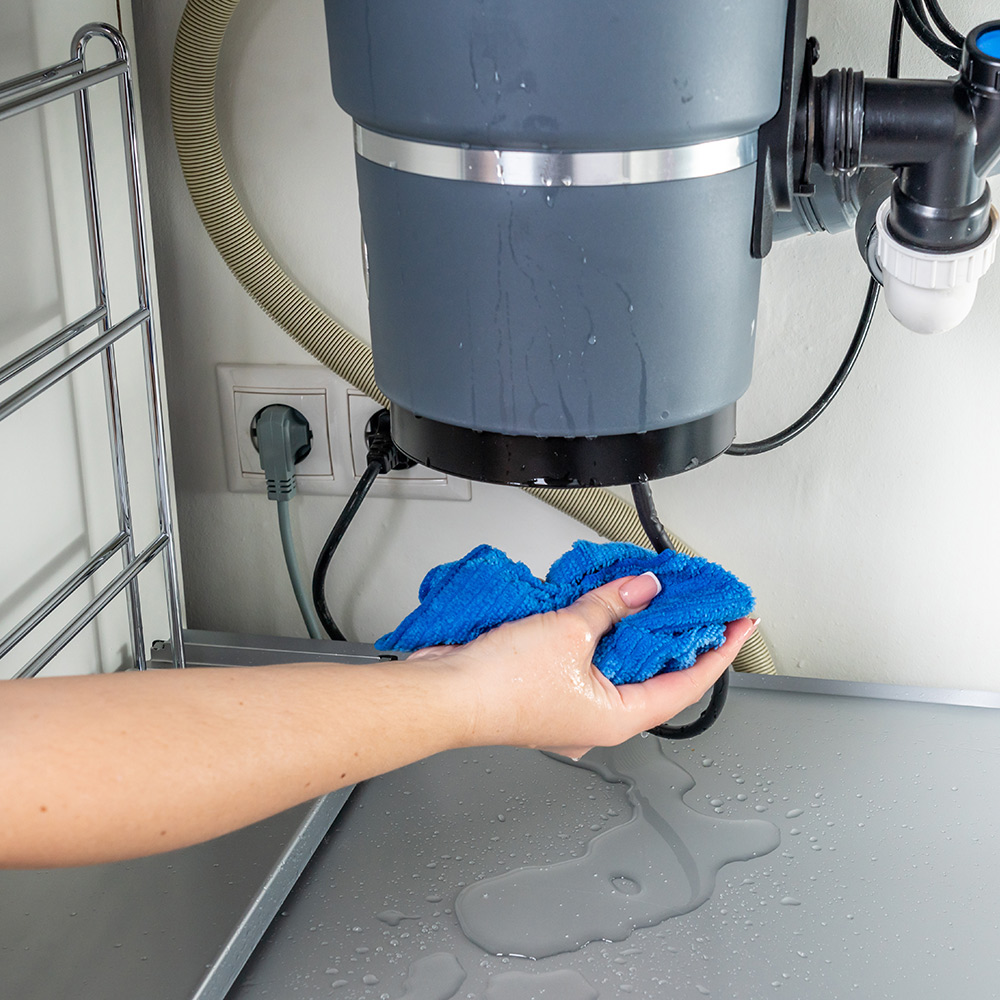They are making a number of great pointers regarding Tips on Fixing a Leaking Garbage Disposal overall in this content which follows.

Garbage disposals are crucial kitchen area devices that aid in taking care of food waste effectively. Nevertheless, a leaking waste disposal unit can be an aggravating and untidy trouble to take care of. Luckily, several leaks can be fixed conveniently with a few easy actions. In this article, we will go over how to fix a dripping garbage disposal properly.
Introduction
Garbage disposals are installed under cooking area sinks and are created to shred food waste right into smaller pieces, permitting it to pass through the plumbing system easily. While these tools are typically trusted, leakages can occur over time because of deterioration, loosened connections, or damage to the system.
Common Root Causes Of Leaks in Rubbish Disposals
Worn Seals and Gaskets
Seals and gaskets play a critical duty in avoiding water from dripping out of the garbage disposal. In time, these parts can degrade, resulting in leakages around the disposal system.
Loose Connections
The connections in between the garbage disposal and the pipes system can end up being loosened with time, triggering water to leak out during procedure.
Fractures or Holes in the Disposal Unit
Physical damages to the waste disposal unit, such as splits or openings in the housing, can also result in leaks.
Determining the Source of the Leak
Before trying to fix a leaking garbage disposal, it is necessary to determine the resource of the leakage. This can generally be done with visual examination or by conducting basic examinations.
Visual Examination
Evaluate the waste disposal unit device very carefully for any kind of indications of water leakage. Pay close attention to areas around seals, gaskets, and connection points.
Checking for Leakages
One way to check for leakages is by running water through the disposal unit and checking for any type of visible indicators of leak.
Tools and Materials Needed for Fixing a Leaking Waste Disposal Unit
Prior to beginning the fixing process, gather the required devices and products, including a screwdriver, adjustable wrench, plumbing professional's putty, replacement seals or gaskets, and epoxy or patching product for repairing fractures or holes.
Step-by-Step Overview to Repairing a Dripping Garbage Disposal
Turn Off the Power
Before trying any repair work, ensure that the power to the waste disposal unit system is shut off to stop the risk of electric shock.
Situate the Leak
Determine the precise area of the leakage and establish the cause.
Tighten Connections
Utilize a wrench to tighten any type of loose links in between the disposal system and the pipes system.
Replace Seals or Gaskets
If the leak is because of used seals or gaskets, remove the old components and change them with new ones.
Patching Cracks or Holes
For cracks or holes in the disposal device, usage epoxy or an appropriate patching material to seal the broken area.
Examining the Waste Disposal Unit After Fixing
Once the repair work is complete, test the waste disposal unit by running water via it to make sure that the leak has actually been settled.
Preventive Upkeep Tips to Avoid Future Leaks
To prevent future leaks, it is essential to do normal maintenance on your garbage disposal. This includes keeping it tidy, preventing putting non-food products or hard things down the disposal, and occasionally checking for leakages or other problems.
Verdict
Finally, repairing a leaking waste disposal unit is a relatively simple process that can be finished with basic devices and products. By following the steps laid out in this short article and practicing preventative maintenance, you can keep your waste disposal unit in good working condition and avoid pricey repair work in the future.
What to Do About a Leaking Garbage Disposal
A leaking garbage disposal often goes unnoticed until you confront a sopping cabinet, a foul-smelling puddle, or an audible drip-drip-drip from the unit. The fix can be frustrating, too, because the leak can stem from a number of components in the system. Fortunately, with a little sleuthing, you can zero in on the leak and—depending on the exact location—stop the icky oozing and repair the component that caused it. Worst case scenario, if it turns out that the garbage disposal must be replaced, installing a new one is a reasonable do-it-yourself task for those with basic plumbing skills. Read on to keep the cash you’d otherwise hand over to a pro.
Prepare to find the leak
Prior to testing the garbage disposal for leaks, unplug it at the wall outlet and turn off the power from the breaker box to prevent electrical shock. Then insert a watertight sink stopper into your sink drain and wipe the unit dry with a clean cloth. In any handy container, mix a few drops of food coloring into a few cups of water, and pour the dyed water onto the sink stopper to help you locate the leak.
Investigate the source
the top, where the disposal meets the sink drain the side, where the dishwasher hose or main drain pipe connects to the disposal or the bottom of the unit Inspect each of these locations while gliding a light-colored rag over the unit; the dyed water will readily show on the rag and reveal the location of the leak. If a leak isn’t immediately apparent, remove the sink stopper and pour a few more cups of dyed water down the sink drain, then check for leaks again. Leaks near the top of the unit are more likely to show themselves while the sink is plugged, while side and bottom leaks are more noticeable while the sink is unplugged.
The metal sink flange that sits directly inside the sink drain is typically sealed around the top with plumber’s putty (a clay-like sealant) and then secured from under the sink with bolts. If the plumber’s putty deteriorates, or the bolts loosen, the flange can no longer form a watertight seal between the sink drain and the disposal—which could cause a leak at the top of the unit.
To reseal the leaky flange, you must first detach the garbage disposal. Start by loosening the screws securing the main drain pipe to the disposal, then loosen the screws in the metal clamp securing the dishwasher hose to the disposal and detach the drain pipe and dishwasher hose from the disposal. Loosen the screws in the mounting ring that connects the disposal to the metal mounting assembly beneath the sink, then pull down the disposal and carefully set it on a clean, dry surface. Loosen the bolts in the mounting assembly with a wrench, then pull down the mounting assembly and set it near the disposal.

As an enthusiastic reader on The Handy Guide To Fixing Your Garbage Disposal Leaking, I figured sharing that topic was worth the trouble. Sharing is good. Helping others is fun. Thank you for your time spent reading it.
Visit Website